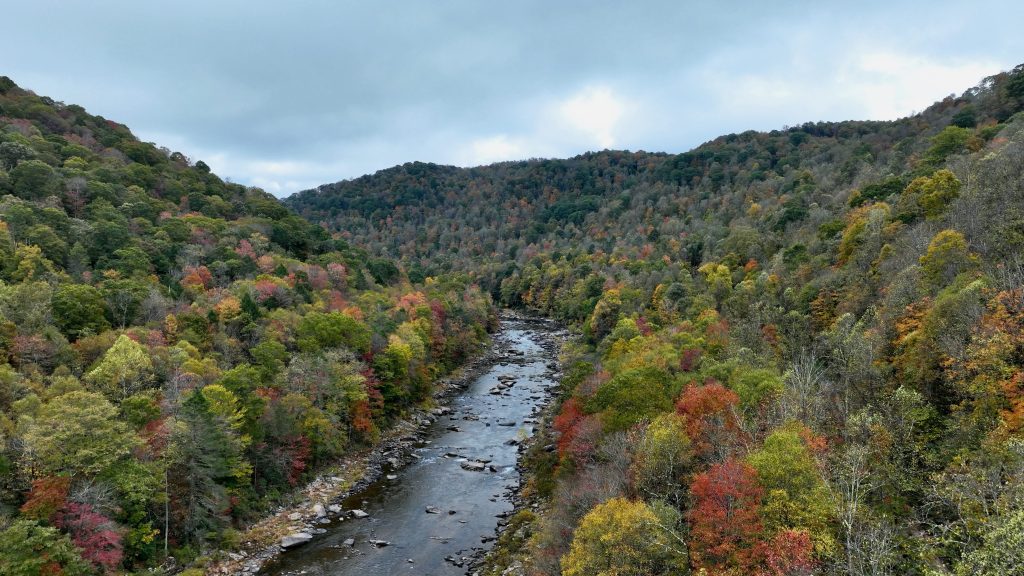Many newcomers to the Appalachians lament the fact that a person is not defined as a native unless one’s family has lived in the area for generations. In the natural world, the definition is even more stringent. In short, if it wasn’t here when Columbus arrived, it is not native; though numerous Old World plants readily naturalized in North America and quickly blended into the landscape. Even domestic farm and garden plants “escaped” to the wild. Peach trees, for example, originated in China and were introduced in the South by the earliest Spanish explorers. The fruit was soon grown by Indians, and spread naturally as well. Peach trees became so common in the wild that English settlers, arriving a few years later, assumed it was a native American fruit. Most modern-day hikers frequently experience a similar situation. Walking through abandoned homesteads one sees garden bulbs blooming, aging apple trees, and other domestic plants that seem to fit into the natural landscape.
The apple has been cultivated in Europe for centuries, and botanists have traced its genetic origin to the present-day country of Kazakhstan in Central Asia. Wild crabapples were the only comparable fruits that evolved in North America, but these species have no direct relationship to the modern domestic apple. Yet America enriched the European apple to a degree that it could arguably be called a native American fruit.
Quantity vs. quality
Not every apple tree produces good-tasting fruit. A tree grown from seed usually bears fruit with little resemblance to the parents. The genetic material of the parents mixes in such a way that most seedling apple trees are worthless in terms of the taste and usefulness of the fruit. Only about one out of several hundred seedling apple trees is of any value. Therefore, apple trees typically are propagated by grafting; i.e. clones are created in order to reproduce the desirable characteristics of the parent fruit. As a result, several apple varieties exist today that originated hundreds of years ago, some as far back as Roman times. Europeans had little incentive to test new varieties because the amount of land available for experimenting with apple seedlings was very limited. The situation changed, however, with the arrival of Europeans in America.
While early Americans used apples for fresh-eating and cooking, an overwhelming majority of the annual apple crop went into cider and livestock feed. In both cases the quality of the apples used did not matter. Cattle and hogs are indifferent to distinctions in apple taste; and good quality cider can be made from a mixture of any apple varieties, even though the fruit itself may be tasteless.
With little motivation to cultivate high-quality fruit, the need for large quantities of apples, and the seemingly unlimited land offered by the vast continent, settlers had every incentive to plant huge seedling orchards with no concern about the quality of the apples. Such orchards were further encouraged by the fact that land speculators required tenants to plant many fruit trees to “improve” property, thereby increasing its value.
The migratory nature of the population also necessitated the propagation of apples via seed rather than grafting since seeds are obviously much easier to transport over the Atlantic and across the continent than live grafted plants. In addition, “volunteer” tree sprouts from discarded seeds were often allowed to mature. The result was an unintended continental experiment in the production of new apple varieties. Of the thousands of seedling trees prolifically growing in America, a random few produced exceptionally high-quality fruit. These varieties were saved, propagated, widely distributed, and some are grown yet today. In a sense, the wild immensity of the American continent generated new varieties of the domestic apple.
Native American fruit
Quality apple production in the southern mountains was limited early on by the fact that the European population was transient. Many mountain settlers lived only a few years in one location before moving farther west. Thus apple trees, which must be cultivated 5- 10 years before producing fruit, did not thrive in such an unstable environment.
The Cherokee Indians, however, readily accepted the European fruit and soon were producing new varieties they developed themselves. Historian Donald Davis observes, “the Cherokees were indirectly responsible for keeping apple growing alive in the southern Appalachians.” European settlers soon recognized the value of mountain apples and by the mid-1800s sustained efforts were underway to better develop apple production in the southern Appalachians- led by Georgian Jarvis Van Buren and North Carolina’s Silas McDowell. In their search for high-quality varieties, Van Buren and McDowell discovered that most of the superior apples came from orchards originally planted by the Cherokee. These Cherokee varieties were propagated and distributed; and many remain in cultivation to this day.
America added new dimensions to the Old World apple. Its wild-like cultivation led to the development of hundreds, if not thousands, of new varieties. The fruit’s adoption and improvement by the Cherokee further strengthened its ties to the New World. Given the apple’s unique experience in America, perhaps we can make an exception to the botanical rules and declare the adopted apple a native American fruit.
Related Articles
Latest News

Leave a comment
Your email address will not be published. Required fields are marked *





Leave a Comment